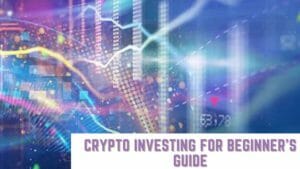In any financial market, volatility persists due to rapid and significant price fluctuations or unpredictability in the direction of the market. Grid trading and Futures grid are two lucrative trading strategies extensively used in cryptocurrency trading. The underlying principle behind the two strategies is to maximise profit in all possible scenarios that arise with a guarantee of minimised risk. It involves taking advantage of the cryptocurrency market’s volatility by deriving profit within a pre-set range without having to forecast the market direction. It eliminates emotion from the equation and produces a reliable outcome.
Table of Contents
Grid trading
How Grid trading works?
Grid trading involves placing buy and sell orders around a base price at pre-determined intervals, creating a grid of orders. The levels are equally spaced above and below the central price. A buy order is placed when the price drops below the base level, and a sell order is placed when the cryptocurrency’s price jumps above the base level.
Let us assume, you are trading a cryptocurrency currently priced at $100. You decide to set a grid where the interval size is set to $5.
- Sell orders are placed at $105, $110, $115 and so on..
- Buy orders are placed at $95, $90, $85 and so on….
A buy order is triggered if you buy ten units of the stock at the base price, and the price goes down to $95. Let’s say ten more stock units are purchased at $95. Going forward, whenever the price goes to $105, a sell order is initiated, allowing you to reap profits by selling some units.
In a traditional trading environment, you would have suffered a loss of $5 per unit of the stock you bought when the price dropped down to $95. Grid trading helps us to earn a profit even when the market is bearish.

The following are some advantages of Grid trading that justify why it is a popular and reliable strategy amongst the trading community.
- Simplicity: Grid trading is simple to set up and understand, making it accessible even to new traders.
- Automation-friendly: The technique is easily automated with trading bots, eliminating the need for constant manual monitoring.
- Profits from volatility: Grid trading does not rely on forecasting the market direction. Instead, it capitalises on the natural up and down motions within a predetermined range.
- Flexible trade Sizes: Traders can adjust the size of each grid level, allowing for more accurate risk management and capital allocation.
What is Futures Grid Trading?
Futures Trading involves placing buy and sell orders for futures contracts at predetermined intervals. Futures contract is basically an agreement to buy or sell an asset at a future date at a given price. This technique takes advantage of the leverage provided by futures contracts, which allows the trader to hold larger positions with less capital.
Consider the following scenario – The current market price of a cryptocurrency ‘X’ is $50. You believe that the price will rise in the next 3 months.
- You bought a ‘X’ futures contract for 100 units at $50 per unit, with an expiration date three months from now.
- The futures exchange requires a margin deposit to open this position. Assume the margin deposit to be $500 to control $5000 position ( $50 per unit x 100 units).
- Suppose the market price of ‘X’ increases to $60 per unit in a month. You now have an unrealised profit of $1000 for the 100 units you have control over.
- To lock in your profit, you can sell your futures contract at the current market price.
- If you hold the contract until expiration, you are obligated to buy the 100 units of ‘X’ at $50 per barrel, regardless of the current market price.
So what’s new?
Leverage: futures trading allows you to hold a large position using a significantly small capital investment. In this example, you controlled $5000 worth of currency at $500.
With additional features comes increased risk. Various cryptocurrency exchanges are present in the market today which provide an efficient and relatively safer platform for futures trading.
Crypto Exchanges offering Futures Grid
Several cryptocurrency exchanges offer futures trading, but Bybit has emerged as a market leader with its community of traders. Bybit’s straightforward interface, advanced trading tools, and rigorous safety protocols make it an ideal platform for implementing the futures grid approach.
On Bybit, the futures grid is available for a variety of cryptocurrency pairings, including Bitcoin (BTC), Ethereum (ETH), and Ripple (XRP), among others. Traders may tailor their grid features like : a) grid spacing b) order size c) total number of grid levels d) total investment to meet their specific risk tolerance and trading objectives.
How do you start with Futures trading on Bybit?
Step 1: Create your ByBit account by entering your details
Step 2: If you are a first time user, you will be awarded a joining reward of 20UDST. Claim that reward to start trading
Step 3: Go to the Derivatives section in the top bar present

Step 4: From the drop-down menu, select Derivatives Portal.

Step 5: Move to the bottom of the tools section in the right panel and select Futures Grid option .
Step 6: You can choose the leverage to be 1x to trade with the same amount and hold positions equivalent to the margin deposit. However, to adjust the leverage, move to the margin in the top right of the panel. Now, you can adjust the leverage according to your wish using the slider provided.

Step 7: Specify the field values in the Futures panel that appears in the tool section. Enter the lower limit and the upper limit in the price range section. Also, choose the number of grids you want to have.
Remember, more grids, more trades. Our aim is to optimize profits, not to do a lot of trades. Therefore, avoid using a lot of grids in a small price range; otherwise, trades will happen with a very short price range and might not even cover trading fees on every trade.
Now, specify the amount you want to invest in USDT.
You can also choose the Smart Fill option to fill out the input fields.

Step 8: Click on Create Grid option to start trading.

Step 9: You should carefully do your calculations and make customized changes. After all is done, you can start your positions on Bybit.
How does Bybit minimise the element of risk in futures trading?
- Adjustable Leverage: Users can choose their leverage according to their risk capacity. Bybit also allows users to change this leverage even after a position is opened to manage their risk exposure accordingly.
- Stop-loss orders: Traders can set a specific price at which their positions will automatically be closed. This feature eliminates the possibility of losses that can occur in the future.
- Take-Profit Orders: When a predefined amount of profit is reached, Bybit has a feature to automatically lock the profit and close the trade to minimise potential risk.
- Insurance: Bybit maintains an insurance fund to cover losses when a trader’s position is liquidated below the bankruptcy price. This helps prevent losses exceeding the margin, protecting both traders and the platform.
Apart from Bybit, several other large cryptocurrency exchanges, such as Binance Futures, BitMEX, OKEx, Houbi Futures, and Bitfinex, provide futures grid functionality, yet with distinct benefits and capabilities.
Conclusion
As the cryptocurrency market evolves, futures trading will play a growing role in providing an element of security for traders and solidifying its position as the foundation of modern financial trade.
Mastering the futures grid strategy is a journey that requires a balance of strategy, dedication, and finesse. Whether you choose to trade on Bybit, Binance Futures, BitMEX, OKEx, or any other exchange, your success will be determined by your ability to navigate the market with confidence and clarity. It’s a skill worth investing in, as it can significantly enhance your trading performance.






